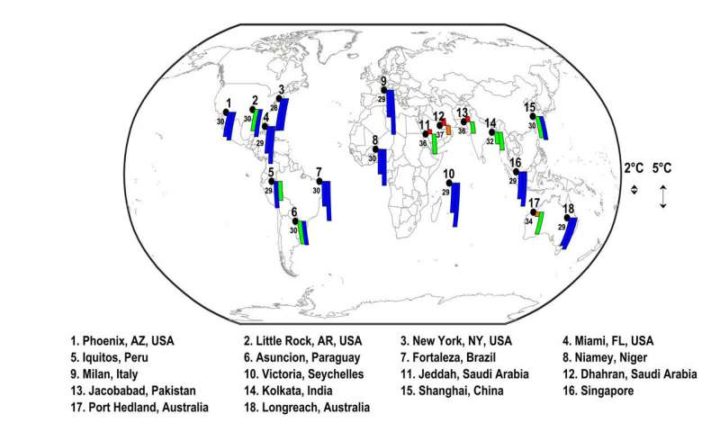US Gulf Coast among regions hit with conditions not expected for decades.
Most everyone knows that humid heat is harder to handle than the “dry” kind. And recently, some scientists have projected that later in the century, in parts of the tropics and subtropics, warming climate could cause combined heat and humidity to reach levels rarely if ever experienced before by humans. Such conditions would ravage economies, and possibly even surpass the physiological limits of human survival.
According to a new study, the projections are wrong: such conditions are already appearing. The study identifies thousands of previously rare or unprecedented bouts of extreme heat and humidity in Asia, Africa, Australia, South America and North America, including in the U.S. Gulf Coast region. Along the Persian Gulf, researchers spotted more than a dozen recent brief outbreaks surpassing the theoretical human survivability limit. The outbreaks have so far been confined to localized areas and lasted just hours, but they are increasing in frequency and intensity, say the authors. The study appears this week in the journal Science Advances.
The study found that worldwide, wet-bulb readings approaching or exceeding 30C on the wet bulb have doubled since 1979. The number of readings of 31 — previously believed to occur only rarely — totaled around 1,000. Readings of 33 — previously thought to be almost nonexistent — totaled around 80.
A heat wave that struck much of the United States last July maxed out at about 30C on the wet bulb, translating into heat indexes approaching 115 F in places; the highest was 122 F, in Baltimore, Md., and a similar wave hit in August. The waves paralyzed communities and led to at least a half-dozen deaths.
“We may be closer to a real tipping point on this than we think,” said Radley Horton, a Lamont-Doherty research scientist and coauthor of the paper. Horton coauthored a 2017 paper projecting that such conditions would not take hold until later in the century.
Reference: “The emergence of heat and humidity too severe for human tolerance”, Science Advances.






